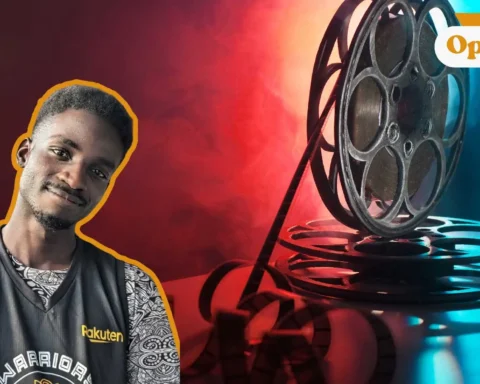Do you work from the office or home? I know it's a vague question. Are you an engineer in the automation industry, where you work with robots? Then this is for you. Like every casual morning, you head to work and program your robots. Imagine the familiar comfort of a bustling workspace shattered by a chilling shriek. It's not the usual morning coffee machine but the piercing alarm of a malfunctioning robot.
This isn't a nightmare; it's a chilling reality we can't ignore. The same machines designed to streamline our lives hold the potential to shatter them.
In 2021, at Honda Marysville Auto Plant in Marysville, Ohio, a worker was crushed between two robots while they were reportedly moving car parts on the assembly line. The worker sustained severe injuries to their leg, requiring hospitalisation and potentially impacting their mobility. Following the incident, Honda launched an internal investigation to determine the cause and prevent similar occurrences. The Occupational Safety and Health Administration (OSHA) also opened an investigation to assess workplace safety protocols at the Honda factory. The outcome of the inquiry and any potential penalties imposed on Honda haven't been publicly disclosed.
Another incident reported in 2021 happened in the most popular Tesla's Giga Texas factory near Austin. An engineer was working on modifying software for two disabled robots when a third operational robot malfunctioned. Witnesses reported that the robot pinned the engineer against a surface and dug its metal claws into his back and arm, leaving a trail of blood. The engineer broke free after a colleague activated the emergency stop button. He sustained an open wound on his left hand but did not require time off work, according to Tesla. Initially, Tesla downplayed the incident, with Elon Musk stating on Twitter that the engineer's injuries were a "minor cut" and attributing them to a "misunderstanding."Later, Tesla reportedly filed an injury report with Travis County and federal regulators, acknowledging the incident and the engineer's injuries.

Tesla hasn't released any official statements regarding the cause of the malfunction or details of their internal investigation. The Occupational Safety and Health Administration (OSHA) and The National Institute for Occupational Safety and Health (NIOSH) investigated the incident to determine if any safety violations occurred at the Tesla factory. While the investigations were ongoing in 2021, the final findings and any government actions taken towards Tesla haven't been publicly released.
In 2019, a similar incident occurred at an Amazon fulfilment centre in Carteret, New Jersey, when a robotic arm designed to move shelves of products in the warehouse struck and injured an Amazon worker. The nature and severity of the worker's injuries are not publicly available. The specific cause of the incident remains under investigation.
In 2018, at Ford Dearborn Assembly Plant in Dearborn, Michigan, a tragic incident took place when a robot designed to move car bodies on the assembly line accidentally struck and seriously injured a worker. The nature and severity of the worker's injuries are not publicly available. The specific cause of the incident remains under investigation.
Beyond statistics and headlines, every robot-related incident leaves a human imprint. Lives shattered, families torn apart, a stark reminder of the human cost of technological advancement. Behind the cold statistics, as documented by the International Labour Organization (ILO) of 2.3 million fatalities are real people: mothers, fathers, daughters, sons, friends, and colleagues. Their lives, cut short by preventable workplace hazards, demand our attention and action.

These are just a few examples, and there have been many other workplace robot accidents over the years. These incidents highlight the importance of robot safety and proper training for workers who interact with robots. Some key aspects include:
Proper programming and maintenance: Robotic systems in warehouses must be programmed with safety protocols in mind and undergo regular maintenance to ensure optimal functioning.
Physical barriers and restricted areas: Demarcated areas and physical barriers can prevent workers from entering zones where robots are operating.
Emergency stop buttons and safety sensors: Easily accessible emergency stop buttons and adequately functioning safety sensors can help prevent or mitigate accidents.
Adequate training for workers: Workers interacting with warehouse robots should receive comprehensive training on safety procedures, potential hazards, and protocols for avoiding collisions.
By prioritising warehouse safety through these measures, we can create a safer environment for workers and minimise the risk of similar incidents occurring in the future. By focusing on safety education, preventative measures, and responsible data handling, we can create a safer environment for everyone working alongside robots.
Going through all these real-time incidents looks like a nightmare. It is important to note that robot accidents are still relatively rare. However, the number of robots in use and the risk of accidents is increasing. Let's not just stare at stats, numb like robots ourselves. Let's honour these folks with sweat, not spreadsheets, with a fierce grip on safety and a heart full of "what if?" No one should punch a clock and risk not punching out because a machine went rogue. We'll build a future where robots lift us, not out, and that's the least we can do for the ones who couldn't make it. What are your thoughts on this issue? Please share in the comments below.











Wow amazing blog layout How long have you been blogging for you made blogging look easy The overall look of your web site is magnificent as well as the content